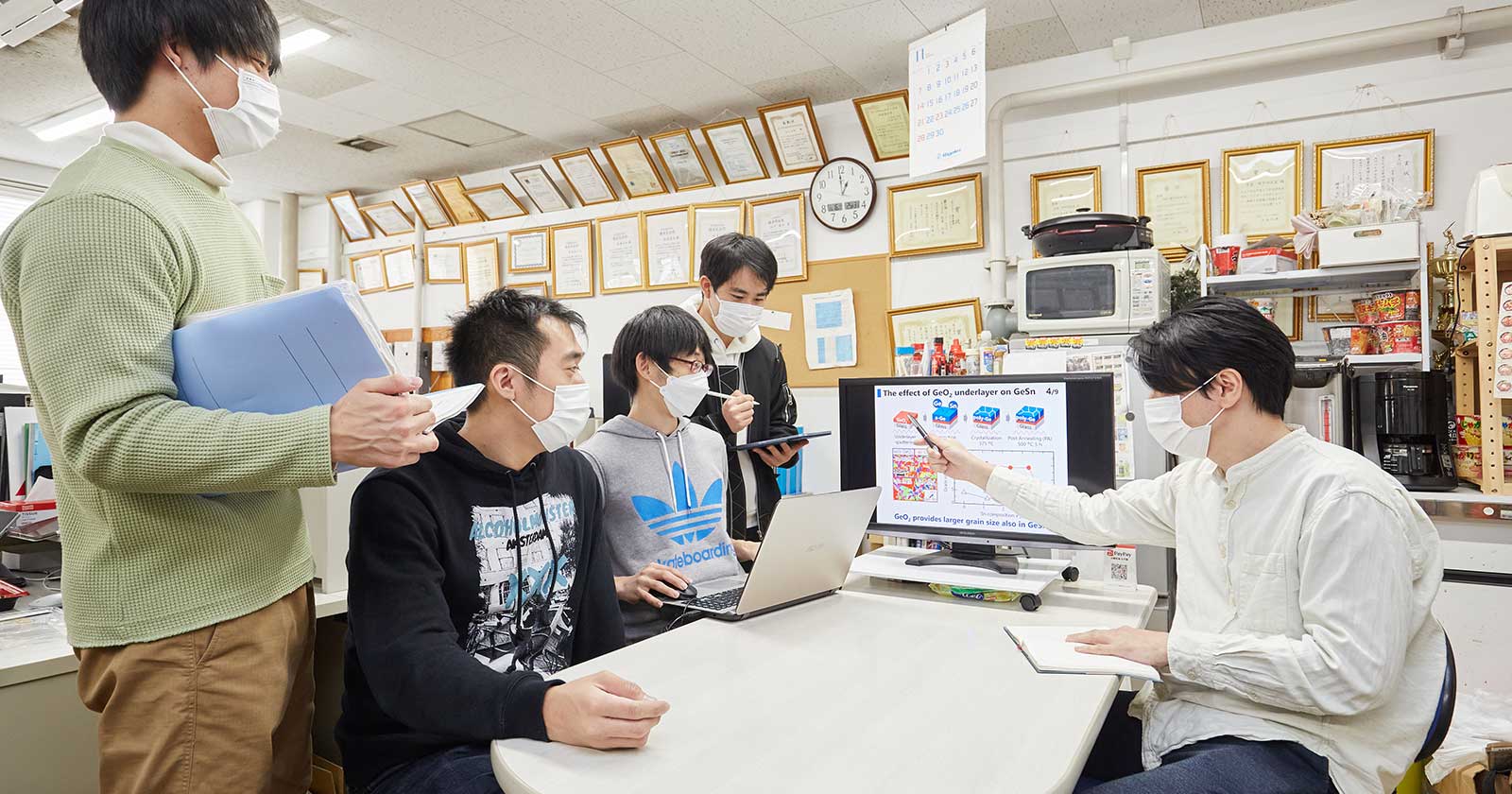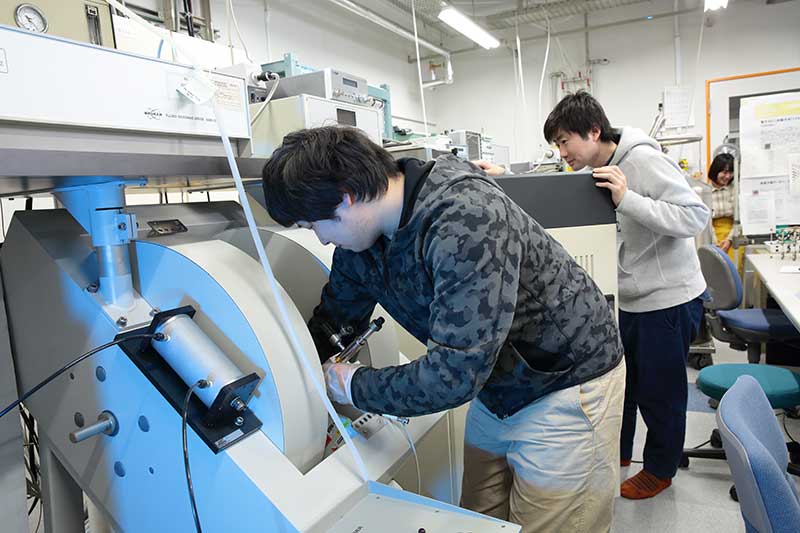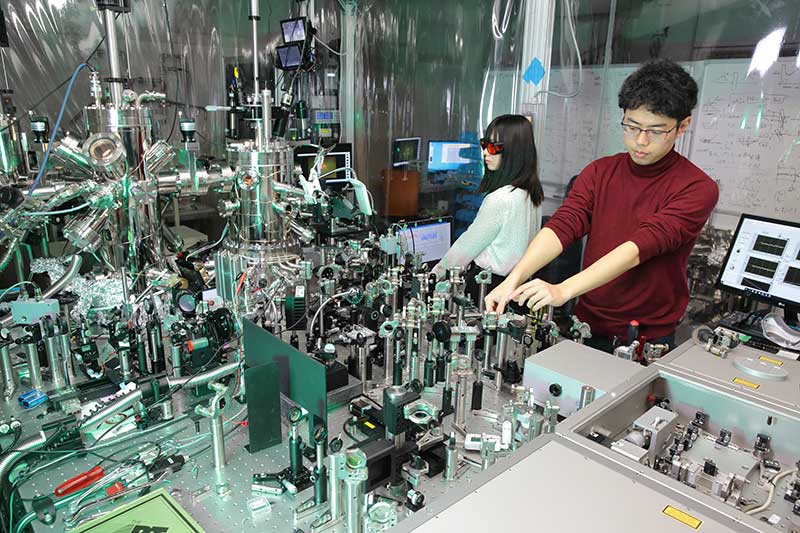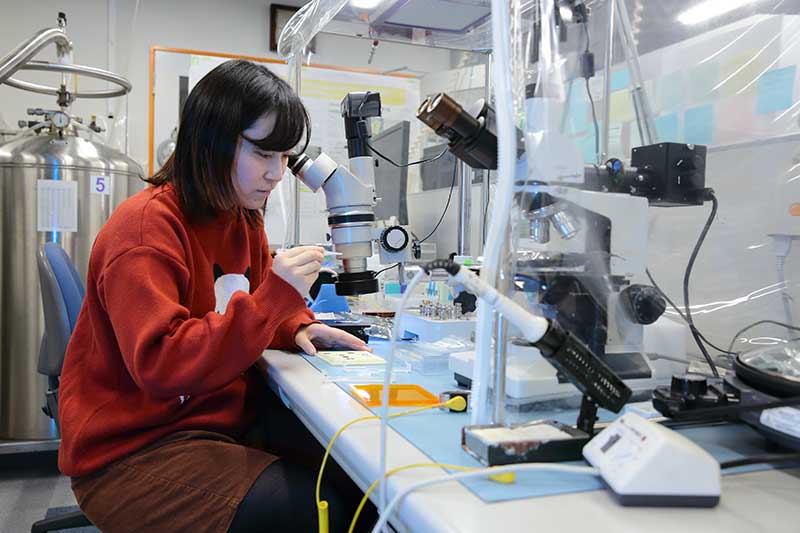
Summary
Did you know that today’s smart phones have computing power comparable to supercomputers of 25 years ago? Nanotechnology, which designs the properties of solids by precisely controlling the arrangement of atoms and molecules, plays an important role in the development of cutting-edge semiconductor and magnetic elements that support this rapid development of the information society. There is a worldwide competition to discover new physical phenomena, develop elements that work based on new principles, and develop extreme measurement technologies and theories that support these discoveries. Similarly, cutting-edge semiconductor and magnetic material technologies are used in solar cells, which are a source of reusable energy for realizing a sustainable world, and in electric power devices that convert the resulting electric power into voltage for use in electric vehicles.
These semiconductor and magnetic devices will continue to play a leading role in supporting the advanced information society and solving energy problems. The goal of this major is to foster engineers and researchers who can develop new electronic elements from a broad perspective, or develop and construct measurement methods and theories to support them, by learning the fundamentals of solid-state physics, electronics (transistors, semiconductor lasers, solar cells, integrated circuits, magnetoresistive elements, etc.), and other nanotechnologies. The goal of the program is to foster engineers and researchers who can develop new electronic devices from a broad perspective or develop and construct measurement methods and theories to support them.
Translated with DeepL.com (free version)



Introduction of Laboratory
| Laboratory Name | Faculty Name | Research |
| Positron Annihilation Lab(Uedono・Selvakuma Lab) | Prof. Akira Uedono Assistant Prof. Sellaiyan Selvakumar | Development of material evaluation methods using positrons, the antimatter of electrons, and evaluation of physical properties of green and biotechnological materials (metals, semiconductors, polymers, oxides, biomaterials, etc.) using these methods |
| Device Physics Lab(Sano Lab) | Prof. Nobuyuki Sano | Computer-based simulation of near-future nanoscale semiconductor devices and theoretical study of semiconductor physics for this purpose |
| Extreme Sensing and Nanotechnology Lab(Takeuchi・Yoshida・Arashida・Mogi Lab) | Associate Prof. Osamu Takeuchi Associate Prof. Shouji Yoshida Assistant Prof. Yusuke Arashida Assistant Prof. Hiroyuki Mogi | We are developing new microscopes to observe the ultra-fine world of the nanoscale, including femtosecond ultrafast phenomena, and conducting research for the creation of new materials and the development of novel functional materials. |
| Magnetic Materials and Measurement Lab(Yanagihara・Sharmin Lab) | Prof. Hideto Yanagihara Assistant Prof. Sonia Sharmin | Development of new magnetic and electronic materials based on nanostructures (thin films, nanoparticles) of metals and oxides. Research on basic physical properties of magnetic electronics with low energy consumption. |
| Semiconductor Quantum Nanostructure Lab(Ohno Lab) | Prof. Yuzo Ohno | Electronic, optical, and spin properties of semiconductor quantum nanostructures, and spin coherence in semiconductor quantum nanostructures toward quantum information and low power consumption technologies |
| Power Electronics Lab(Iwamuro・Yano Lab/ Isobe・Mannen Lab) | Prof. Noriyuki Iwamuro Associate Prof. Hiroshi Yano Associate Prof. Takanori Isobe Assistant Prof. Tomoyuki Mannen | In order to use electrical energy without waste, we are researching high-performance power semiconductors using wide-gap semiconductor materials such as silicon carbide (SiC) and high-efficiency power conversion devices. |
| Environmental Friendly Materials in the Next Generations Lab(Suemasu・Toko Lab) | Prof. Takashi Suemasu Associate Prof. Kaoru Toko | We are fabricating ferromagnetic materials, new semiconductors composed of resource-rich elements, to realize extremely efficient solar cells with a thickness of about 1 μm and devices that utilize the spin of electrons. |
| Semiconductor Materials Design Lab(Sakurai・Traore Lab) | Prof. Takeaki Sakurai Assistant Prof. Traore Aboulaye | We handle a wide range of materials from organic to inorganic compounds, and develop energy-creating and energy-saving devices by evaluating the physical properties of solar cells, photocatalysts, and semiconductors for power electronics. |
| Electron Spin Resonance Spectroscopy Lab(Umeda Lab) | Associate Prof. Takahide Umeda | We are investigating defects in power semiconductors and nanoelectronic devices using ultra-sensitive electron spin resonance spectroscopy. We are also working on “quantum sensing” using spin. |
| Nanostructure Control Lab(Hasunuma Lab) | Associate Prof. Ryu Hasunuma | We are conducting basic research on silicon nitride and silicon oxide films used in integrated circuits and power devices to investigate their insulating and charge-capture properties and to realize superior insulating films. |
| Wide Bandgap Semiconductor Lab(Okumura Lab) | Assistant Prof. Hironori Okumura | We are conducting research on wide-gap (nitride and oxide) semiconductor optical and electronic devices for applications such as ultraviolet LEDs, optical integrated circuits, and high temperature and power devices. |
| Compound Semiconductor Lab(Oigawa Lab) | Lecturer Haruhiro Oigawa | Elucidation of surface interface and bulk structural properties of a wide range of electronic materials, including metals, semiconductors, and insulators, both inorganic and organic, and their application to novel/multifunctional electronic and quantum devices |
| Energy Materials and Devices Lab(Monirul Lab) | Associate Prof. Islam M. Monirul | Growth and characterization of thin-film semiconductors for energy applications such as photocatalysts and ion batteries |
